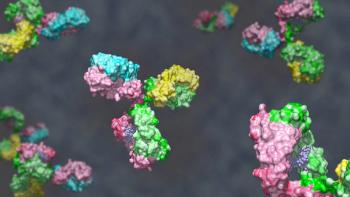
- Biopharm International, December 2021 Issue
- Volume 34
- Issue 12
Trends in Isolator Equipment
Isolators move into smaller-volume processes, including cell and gene therapy manufacturing.
The use of isolators for aseptic manufacturing has increased, driven by the effectiveness of the equipment for product safety and by the increasing number of products that must be processed aseptically (1). Isolators operate as closed systems and can be designed with attached gloves for manual intervention or as “gloveless” for fully automated systems. The draft revision to the European Union’s Annex 1 good manufacturing practices (GMP) for manufacturing sterile medicinal products (2) provides direction for designing and cleaning isolators (1). Evaluating the design of the isolator system in relation to the contamination control strategy is crucial, explained Richard Denk, a senior consultant for Aseptic Processing and Containment at SKAN (1).
Automation inside isolators
Automation inside isolators further reduces human intervention. Comecer, an ATS company, displayed a containment isolator integrated with the company’s new automated SuperTrak Pharma platform for asynchronous conveyance at INTERPHEX 2021. The automated system offers flexibility with individually controlled shuttles, which increases throughput while while using a less complex and smaller footprint than traditional automation systems.
Although isolators have been commonly used in larger-scale or automated aseptic fill/finish, the technology is pushing into smaller-volume areas. Robotic automation is beneficial for small batches because it allows flexibility and more rapid changeover (3). Syntegon introduced the modular, small-batch Versynta FFP [Flexible Filling Platform] in 2021. It uses a four-axis robot inside the isolator to handle containers for filling aseptic or highly potent liquid products and can fill up to 3600 containers per hour (4). The isolator’s air flow is optimized so first air is supplied to the containers without obstruction.
Syntegon’s Versynta microBatch is an automated production cell in a gloveless isolator for smaller batches in the range of 120–500 containers per hour. This system, which is being developed in partnership with Vetter, is planned to be launched in 2022 (3).
Isolators for CGT
Innovative isolator equipment is being developed and used in cell and gene therapy (CGT) manufacturing, as more companies get involved in the emerging area of advanced therapy medicinal products (ATMPs). While these small-volume processes started out primarily as manual processes in biosafety cabinets, new equipment offers the option of closed and automated processing. Biosafety cabinets have lower initial capital costs, but they present higher risk of microbial or cross-contamination and must be used in a Grade B cleanroom. Isolators, however, are closed systems that reduce contamination risk. Another advantage of using an isolator are that they can be used in a Grade C or D cleanroom, which requires less capital expenditure and lower energy use. The lower cleanroom levels require less personal protective equipment (PPE), which is more comfortable for operators as well as saving in costs and environmental impact of PPE disposal, explains Matt Pridden, standard product development manager at Extract Technology. Inquiries into isolator technology for ATMPs have been increasing, says Pridden, primarily because of the higher level of safety and the need to meet the requirements of Annex 1. Use of a Grade A isolator is known by regulators and the industry as the lowest level of risk to sterility, he adds.
Cellectis, for example, is a gene-editing company that recently opened a facility where it is performing clinical-stage manufacturing of allogeneic, universal chimeric antigen receptor T-cell (UCART) immunotherapies. In each the facility’s two manufacturing suites, a custom designed, four-chamber isolator encloses all parts of the UCART manufacturing process. Glove ports allow operators to perform manual process steps in the isolator. A separate isolator is used in the filling suite for automated fill/finish of the vials. Steve Doares, Cellectis’ senior vice-president of US manufacturing and the site head of the new Raleigh, NC manufacturing site, explained that the isolators were chosen instead of biosafety cabinets to maximize product quality assurance and maintain aseptic conditions throughout (5).
SKAN’s new Cellana isolator is designed for GMP manufacturing of ATMPs. A modular design allows different components to be integrated as needed for the specific process, and it can be integrated with semi-automatic or automated filling systems. The Cellana isolator uses technology already established in SKAN’s other isolators, such as the SKANfog decontamination technology and a catalytic convertor that completely decomposes hydrogen peroxide before the air is exhausted. The isolator uses a Grade A unidirectional airflow with high efficiency particulate arrestance filtration in both the air supply and the air return ducts, which allows it to handle viral vector and potent compounds (6).
In July 2021, powder-containment equipment specialist Dec Group acquired Extract Technology, which manufactures aseptic and containment work environments including CGT isolators (7). The company’s Modular Cell Therapy Isolator can be configured from chambers for transfer, centrifuge, and processing that form a Grade A environment, which is decontaminated using vapor-phase hydrogen peroxide. Patent-pending dockable incubators can be connected and disconnected as needed to allow multiple cell cultures to be processed. Another key aspect is the ability to integrate equipment specific to a client process, says Pridden. Extract Technology’s isolators have been used for several years to produce allogeneic stem cell transplant therapies. The systems can also be used for autologous cell therapies. The closed system allows open manipulation within a Grade A environment.
Comecer offers several isolators specifically designed for CGT. For example, a standalone isolator workstation is designed for applications that require cell manipulation and incubation under GMP conditions. The company makes a docking incubator system that can be connected to its CGT isolators using the Comecer Flexy interface. Modular components allow more flexibility to adapt and scale any manufacturing process. In June 2021, Comecer partnered with G-CON to provide its CGT closed aseptic systems (isolators and fillers) prequalified and installed inside G-CON’s prefabricated POD cleanrooms. (8).
Single-use isolators
ILC Dover extended its single-use, flexible containment isolator technology to aseptic isolators with the introduction of the soloPURE flexible aseptic isolator (9). The isolator’s closed, Grade-A aseptic environment can be used for aseptic processes and fill/finish tasks, including small-scale vial filling. The equipment has a small footprint, and the chamber has glove ports on both sides. The flexible chamber is gamma irradiated for use one time before disposal, or it can optionally be sterilized-in-place with vaporized hydrogen peroxide. The disposable chamber eliminates the need for cleaning and validation, which allows rapid changes from one product to another.
References
- R. Denk, Pharm. Tech. 44 (11) 34-37 (2020).
- EC, Draft Revision to “Annex 1, Manufacture of Sterile Medicinal Products,” (Brussels, 2020).
- J. Markarian, Pharm. Tech. 45 (10) 16-21 (2021).
- Syntegon, “Versynta FFP,” Press Release, March 10, 2021.
- J. Markarian, “Cellectis Opens GMP Manufacturing Facility,” PharmTech.com (Oct. 22, 2021).
- SKAN, “Cellana Cell & Gene Therapy Isolators: Interview with Our Cell & Gene Task Force (3),” Skan.com (November 2021).
- Dec Group, “Dec Group Announces Acquisition of Extract Technology,” Press Release, July 1, 2021.
- Comecer, “Comecer Partners with G-CON to Speed Up the Implementation of Your Cell and Gene Therapy CGMP Manufacturing Facility,” Press Release, June 3, 2021.
- ILC Dover, “ILC Dover Defines the Future of Sterile Manufacturing with the soloPURE Flexible Aseptic Isolator,” Press Release, April 13, 2021.
About the author
Jennifer Markarian is the manufacturing editor for BioPharm International.
Article Details
BioPharm International
Vol. 34, No. 12
December 2021
Pages: 26–27
Citation
When referring to this article, please cite it as J. Markarian, “Trends in Isolator Equipment,” BioPharm International 34 (12) 26–27 (2021).
Articles in this issue
about 4 years ago
Formulating Autologous Therapies for Cancerabout 4 years ago
Ensuring Quality When Sourcing Biopharmaceutical Raw Materialsabout 4 years ago
Managing Residual Impurities in Complex Biotherapeuticsabout 4 years ago
Looking Past the Pandemic: The Future of GMPs in Aseptic Processingabout 4 years ago
Streamlining Glycosylation Monitoring through Automationabout 4 years ago
The Key Elements for Assay Transfer Successabout 4 years ago
Biotech Startups Seeing Renewed Interest Following Pandemicabout 4 years ago
Breaking the RulesNewsletter
Stay at the forefront of biopharmaceutical innovation—subscribe to BioPharm International for expert insights on drug development, manufacturing, compliance, and more.




